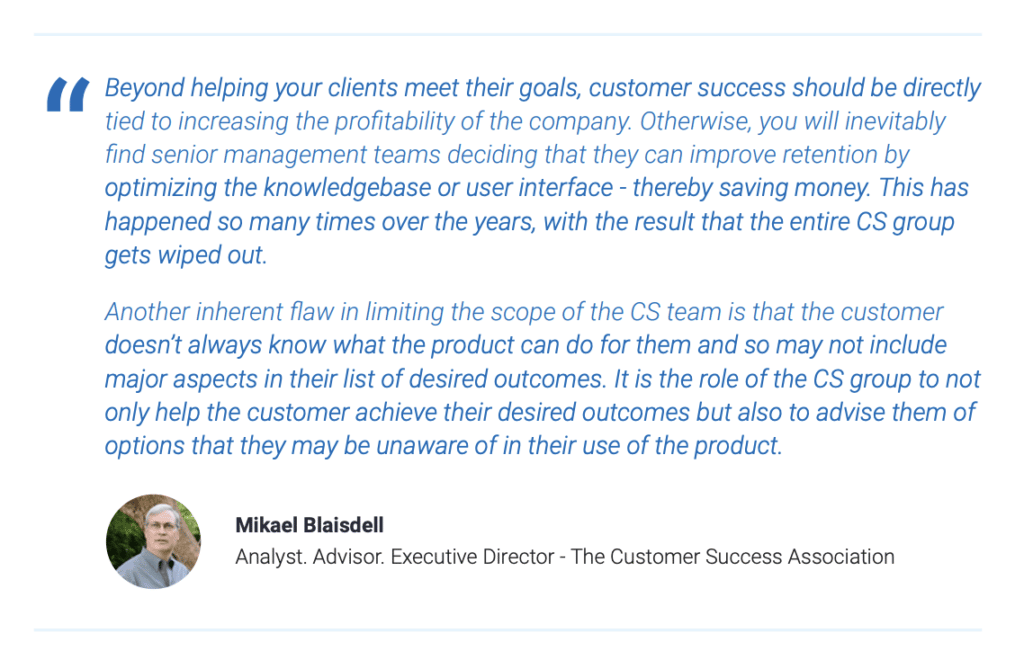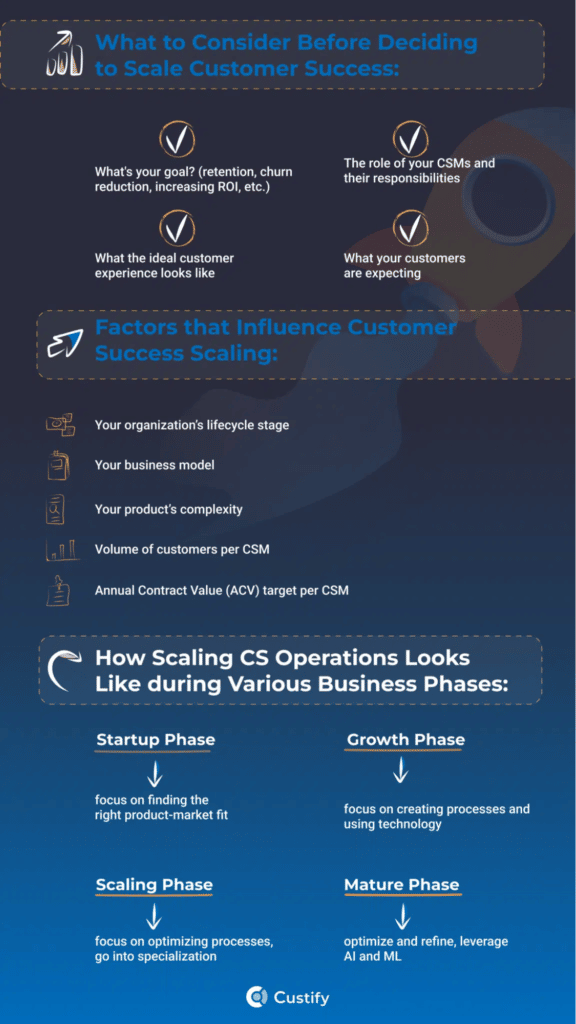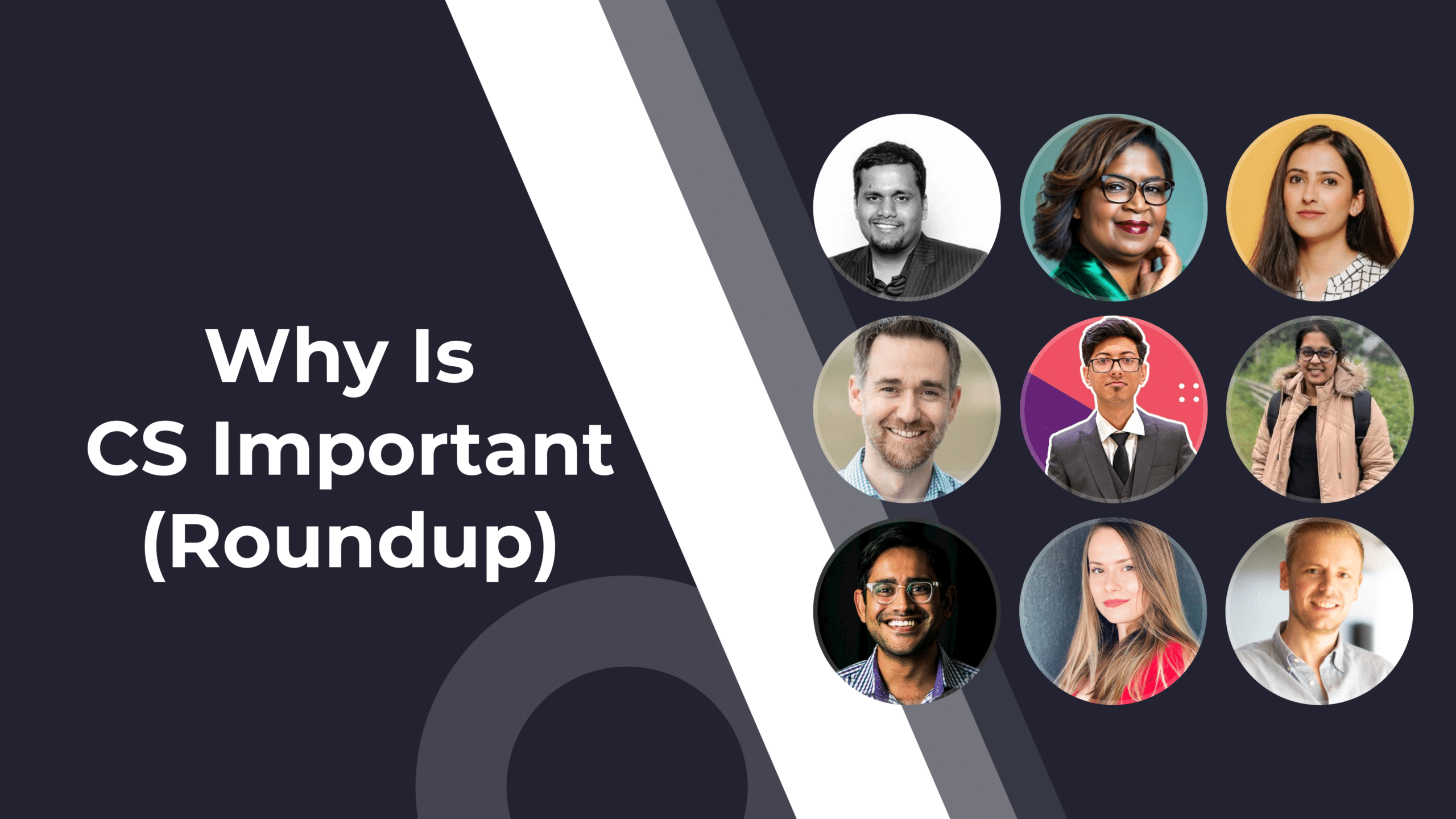In our recent article, we covered some of the key predictions for CS trends that will dominate the industry in 2023.
This time, I will explore a few key challenges that CS teams will need to face in the upcoming year. Some of these are just emerging, while some have been around for some time and can no longer be neglected.
1. Insufficient Budgets & Resources
CS teams not having enough resources to successfully manage and help their customers is a tale as old as CS itself. As we discussed in our 2023 CS Predictions article, one of the main reasons for this is the fact that SaaS leaders have been reluctant to invest in CS.
Unfortunately, this challenge will persist in 2023, encompassing both limited CS budgets and the general lack of necessary resources. This includes the lack of proper CS tools, understaffing, and a struggle to keep up with the CS industry’s increasing demands.
Solution
The good news is that resolving both budgetary and resource constraints of your CS team is a two-birds-one-stone affair. The name of the stone is “strategy.”
More specifically, you need a strategy that will showcase the quantifiable value of your CS efforts to your CEO, CFO, and other key stakeholders. This strategy should cover clear metrics and KPIs, how meeting those KPIs will impact your wider business goals, and what resources you need to meet them.
Some of the metrics that best measure the ROI of your CS team are:
- Net Revenue Retention (NRR)
- Customer Lifetime Value (CLTV)
- Customer Retention Cost (CRC) and CRC Ratio
- Churn rate
- And more
Because these metrics are impacted by the costs and revenue associated with your CS efforts, the C-Suite stakeholders pay close attention to them. So, if you want to get the budget you need, make sure to include them in your strategy.
The angle from which to approach them can be something like this:
“With a budget of $X, our team will be able to boost our NRR by X%, reduce our CRC by Y%, and reduce the churn rate by Z%.”
💡Custify Tip: Check out our guide on “selling” Customer Success to your organization’s stakeholders
2. Giving Equal Attention to All Customers
2023 will be the year of growth in SaaS —16.7% of it compared to 2022, to be exact. For SaaS business leaders, this is great news. Growth means more demand, more demand means more prospective customers, more customers means higher revenue — you catch the drift.
However, for many CS teams, this prospect will present an operational challenge — if not a nightmare. This particularly applies to CS teams that are used to managing relatively modest customer portfolios. These teams will have to start asking themselves hard questions.
For example, if your customer count increases from 20 to 40 in a span of several months, how do you successfully maintain and scale workflows and processes? Ideally, without hiring more CSMs while still being able to give all customers an equal level of care and attention.
I would especially like to focus on that last part about giving equal attention to all customers, because as a challenge, it’s a bit paradoxical. Hear us out!
Solution
The desire to treat all customers equally is almost instinctual to many CSMs. However, it’s also inefficient. I know, it sounds counterintuitive and counterproductive.
But if you really wish to successfully manage a growing client portfolio, you must understand that some customers don’t need as much attention as others.
Instead, you should separate them based on priority and focus more on those who demand a more involved, proactive approach. The easiest way to do this is to segment your customers based on the following two criteria:
- Value of their business: Here, you can use metrics such as MRR, ARR, or potential for growth/upselling to find your high-priority customers. Naturally, the highest-paying customers in this category demand the most care.
- Risk of churn: Finally, segment your customers by how close they are to churning. Regardless of the stage they’re in or how big their bill is, you should do your best to retain your at-risk customers.
Together, these two factors make up the so-called Account Prioritization Matrix, a concept first outlined by Ursula Llabres:

Using this matrix, you can determine your most important, high-value/high-risk customers and make sure you are focusing the bulk of your CS efforts on them.
3. Misunderstanding Customer Needs
Few things can be as discouraging to a CSM as a customer not finding any value in your product or in your CS efforts. Unfortunately, that usually happens for one simple reason — misunderstanding your customers needs.
It wouldn’t be a stretch if I said that all CSMs have been there. When you have numerous customers to take care of, and rigid guidelines to follow, it can be difficult to understand the specific needs of an individual client.
Such a disconnect between your CSMs and your customers will lead to poor customer satisfaction and, ultimately, increased churn. So, how do you avoid that?
Solution
CSMs typically misunderstand their customers’ needs when they attempt to generalize them. This is an easy pitfall to take because on the surface, a one-size-fits-all approach seems efficient. In reality, it goes against the very core of a successful customer success strategy — personalizing the experience for each customer.
Sure, many of your customers probably share the same general desired outcomes, but their more granular needs and circumstances are typically very different. They all have different budgets, project timelines, benchmarks, KPIs, superiors of various levels of impatience, and so on.
So, how do you escape that trap of generalization? To put it simply: do your homework on your customers. From the very first touchpoint, take your time to learn more about what they’re looking to achieve with your product, and how you as a CSM can help them achieve that.
Also, be sure to communicate the value you provide very well. For example, don’t take the generic angle of “Our product helps improve X by doing Y and Z.” Instead, speak to your customers’ specific needs, such as: “I know you are struggling with X, and there is a lot of pressure on you to perform. So, instead of the standard implementation process, let’s focus on that and resolve it as quickly as possible by doing Y and Z.”
Finally, leverage your customer success platform to gain insights into the behavior of an individual customer. You’ll be able to see what part of your product they use the most, what they struggle with, and so on. Analyzing this will help you tailor their experience even further and escape the pitfall of generalization.
4. Driving Business Growth
It’s no secret that 2023 is the year when customer success matures as an indispensable part of any SaaS business. Yes, it’s exciting — but just like many other CS trends we’ve discussed, this development has a darker side.
In almost any business, increased importance also means increased expectations. As such, in 2023, the stakes will be high for CSMs to drive business growth. Now, I’m not saying that this will necessarily be challenging for all CSMs. But, it will certainly require some CS teams to step out of their comfort zones and embrace cross-departmental collaboration.
Solution
If you want your customer success efforts to be a growth driver, you must first escape the narrow value focus that perpetuates in many customer success teams.
Here’s what I mean: for many CS teams, the ultimate goal is to proactively help their customers achieve their goals while nurturing a strong relationship along the way. In other words, this is a classic customer-facing approach — and that’s great!
However, what usually happens in this case is that the broader business goals and growth typically fade into the background. Of course, growth opportunities like upsells are still sought-after, but they’re seen more as consequences of those nurtured relationships, not as direct goals in their own right.
What CS teams should do instead is take that proactive approach and apply it to the growth-driving activities. This will help your customer expansion become more logical and informed.
Essentially, this proactive approach should transform from “What specific conditions can we create for our customers to be happy?” to “What specific conditions can we create for our customers to expand?”

Another important variable in this equation is the Sales-CS alignment, which is especially essential if you wish to drive growth through acquisition rather than expansion. For example, CS with their intimate knowledge of customers can help Sales avoid bad-fit customers or share insightful testimonials and case studies that Sales can showcase to prospects.
And it goes the other way around too. By signing good-fit customers only, Sales will make it easier for CS to successfully expand their accounts down the line and achieve the desired growth.
5. Breaking out of Organizational Silos
The silo mentality occurs when an essential department of an organization becomes isolated and eventually loses touch with the rest of the company.
Of course, it’s not bad for each team in your organization to have specific goals and workflows. The problems start when these goals and workflows become misaligned with the organization’s wider strategy.
As you can imagine, this silo mentality can be quite hurtful to an organization. Well, it can be even more hurtful to your customers — especially when your CS team becomes one of the silos. Unfortunately, CS teams are among the worst offenders when it comes to organizational silos.
As such, breaking out of this silo mentality is going to be both a challenge and a necessity for CSMs in 2023.
Solution
Your CS team can champion demolishing the silo mentality by helping the rest of your organization align around customer success. This means establishing CS-driven workflows and processes for all customer-facing teams in your organization, from sales and marketing to account management and customer service.
The first step to achieving that is aligning on your customer journey. One of the biggest alignment challenges in a SaaS organization is when different customer-facing teams have different ideas about the customer journey.
To avoid that, you should establish a single customer journey framework that all teams should follow. This framework should cover:
- Each team’s responsibilities and desired outcomes for each team at each stage.
- Tools and software that should be used at each stage
- How the different teams interact throughout the journey

A detailed customer journey structure will serve as the foundation for the rest of your alignment efforts, from handoff processes to customer feedback management. Ultimately, your goal is to create a cross-departmental dynamic centered around customer success, where all the stakeholders share the same vision and goals.
The second step to breaking out of organizational silos is breaking down the data silos that may exist in your organization.
It is not uncommon for a SaaS company to sit on a goldmine of data and not leverage it because it’s siloed under separate tools and data platforms. For example, the billing data only exists in the billing system, the customer feedback data only exists in the ticketing system, and so on.
A siloed data structure like this only reinforces a more global silo structure within your organization. To resolve this issue, you should use a customer success software tool such as Custify that will bring all of your customer data in one place. This will make your data easier to access for all departments and boost cross-departmental collaboration.

💡Custify Tip: Learn more about CS alignment with our comprehensive guide.
6. Efficient CS Scaling
We’ve already discussed a few areas where achieving efficiency will be a challenge CSMs will need to face. However, the most important aspect of CS that is set to become more efficient in 2023 is scaling.
That’s because for a long time, CS scaling has been rather inefficient. For context: the typical solution to almost any scaling problem has been to hire more CSMs and hope for the best.
However, in 2023, CS teams can no longer afford to throw more people at their challenges and scale no matter the cost. Instead, they will need to find ways to scale efficiently.
Solution
The exact tactics you can execute to scale your CS efficiently depend on several factors. These range from your business model and the size of your customer portfolio to, most importantly, the business lifecycle stage of your organization.
For example, startups should focus on scaling their CS by establishing and following lean, robust workflows. Meanwhile, growing organizations should start looking into self-service CS and CS Ops.
However, regardless of these factors, there are still a few things you can do to scale your customer success efforts efficiently:
- Embrace automation: Automating as many CS tasks and workflows as possible is crucial for efficient customer success. You can start small with the more minute tasks, such as welcome emails or behavior alerts. Even this will give your CSMs more flexibility and bandwidth with the processes that require human input.
- Customize your approach to different customer segments: A one-size-fits-all approach to all your customers may seem efficient, but in reality it’s not. When you don’t take into account your customers’ specific needs, you might be wasting resources on workflows and processes that offer little value. Instead, you should customize your approach to different customer segments as much as possible to focus on activities that drive value.
- Set clear scaling benchmarks: The scaling benchmarks you set should include the more global business growth KPIs (those concerned with revenue, leads, retention, etc.) as well as the more granular productivity metrics. The latter can range from the number of successful upsells your CSMs complete to the number of EBRs they deliver over a given period.
All in all, the key to efficiently scaling your CS is systematic growth that’s guided by clear goals, rigorous processes, automation, and maximizing value for your customers.

💡Custify Tip: Explore our CS scaling eGuide to learn more about scaling your customer success business without hiring more people
7. Hiring Highly Skilled CSMs
If you as a CS leader want to overcome all the challenges we’ve listed in this article, you need more than budgets and strategies. You also need skilled CSMs to herald these initiatives.
Unfortunately, even though more and more people are joining the CS industry, that doesn’t necessarily make hiring the right specialists easy. And these are the experts that you need if you want to shape your CS team according to the emerging 2023 trends.
So where do you find them?
Solution
Personal connections, networking, and being an active member of the CS community are a must for every CSM in 2023 and beyond. Customer success is a small world, and finding the right person for a new opening on your team is much easier if you already know that person.
Staying in touch with the global CS community also opens a plethora of opportunities for you to learn from the best and stay ahead of the trends. Some of the best customer success communities I recommend exploring are:
Wrapping up on 2023 CS Challenges
If there is one word that appeared noticeably often in this article, that is probably “strategy.” As customer success enters its mature, growth-driving era, CS teams can no longer afford to lunge at their challenges head-first without any plan.
To be successful in 2023, CSMs should do the opposite and have a plan for everything — whether it’s efficient scaling, escaping the silo mentality, or showcasing their value to customers. A thorough strategy goes a long way, and we’re certain that this upcoming year will prove that to CSMs.




